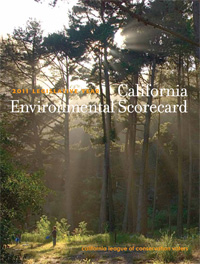Today’s guest blogger is Tara Treiber, education director for Heal the Bay.
I pulled on my rain boots on Saturday and walked the mile or so from my house to the AMC Broadway 4 on the Santa Monica Promenade to watch “The Big Fix” and participate in a Q&A panel after the film. I’d never seen the movie before the screening, but felt as though I was pretty aware of the story about the Deepwater Horizon disaster and Macondo blowout.
I’d read a great deal about it (including the 381-page Report to the President by the National Commission on the Deepwater Horizon Oil Spill and Offshore Drilling), watched podcasts and attended lectures about the spill, and participated in conversations with my marine and aquatic educator peers from the area affected.
The advantage of a well-done documentary, however, is that it brings a story to life, draws the viewer into the story. You feel like you are the one talking with the fishermen who are wondering if they’ll ever get their livelihood back, the one walking on a beach coated with a slick of oil, the one looking up to see the planes dropping gallons of the dispersant Corexit (a toxic chemical banned in the EU) on the ocean and shores, the one chatting with experts about the long-term impacts on the Gulf, and the one who is asking how in the world did this happen.
The movie, helmed by Josh and Rebecca Tickell, also looks at the power of perception in our world – what makes the ocean seem clean versus actually being clean, safe and healthy for the people and animals that rely on it? I think this is a powerful movie that is well worth seeing.
The only issue I have with the movie is that the producers left me with a feeling of dread and anger, but not much of an outlet for taking action. It surprised me, because they did such a great job leaving us with a sense of hope and purpose at the end of their previous film, “Fuel,” which looked at alternative energy.
Working for Heal the Bay, I know everyday actions can make a big impact on the health of our environment, and, if you want to make a difference, you can. Heal the Bay has provided a helpful Q&A about offshore drilling and what you can do to help.



